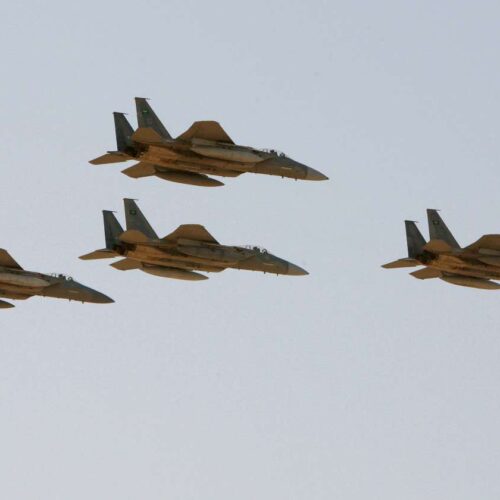Introduction
2011 was a very good year for U.S. arms sales, with more than triple the business from the year before.
According to a new report to Congress, worldwide sales of U.S. weapons last year added up to $66.3 billion. That accounts for more than three-quarters of 2011 arms sales worldwide, which is “the highest single year agreements total in the history of the U.S. arms export program.”
The report was prepared by the Congressional Research Service (CRS) as part of their annual study of arms sales.
In 2010, the U.S. authorized $21.4 billion in sales, which led CRS to describe the jump as “extraordinary.” In terms of overall sales, Russia was distant second to the United States, having moved $4.8 billion. The previous record was in 2009, when the U.S. did almost $31 billion in sales.
Since the start of 2008, 81.4 percent of U.S. arms sales agreements have gone to the Middle East while 16.04 percent have gone to Asian countries.
In the report, CRS notes that sales to developing nations were a major driver in lifting 2011 U.S. sales, jumping from $14.3 billion in 2010 to $56.3 billion in 2011. CRS points to Saudi Arabia and the United Arab Emirates as countries that bolstered their arms purchasing in 2011, which CRS says could be linked to concerns over Iran. Saudi Arabia purchased more than $33 billion in arms from the U.S., including 84 new F-15 jets and upgrades for 70 older models.
The Saudis were not alone in purchasing weaponry in the region. The United Arab Emirates purchased 16 Chinook helicopters for just under $1 billion total; Oman shelled out $1.6 billion for 18 F-16 fighters. Egypt added land forces, spending $1 billion on M1 Abrams tanks, a sale that the Pentagon has used to argue for freezing domestic production of the Army’s signature land vehicle.
But “the U.S. arms agreements with Saudi Arabia were extraordinary,” concluded the report, as they “represent, by far, the largest share of U.S. agreements with the world or the developing world in 2011.”
The selling of arms to Saudi Arabia is not without controversy. As the Center reported in June, the country has continued to receive steady flows of arms from the United States despite being on a State Department watchlist for human rights violations. Since the start of 2004, Saudi Arabia has purchased $75.7 billion in arms.
Another country which has received weapons despite human rights abuse concerns is the tiny nation of Bahrain. Earlier this year, the Center reported that the U.S. lifted a freeze on arm sales that had been put into effect due to human rights abuses during the “Arab Spring” uprising. Like Saudi Arabia, Bahrain is a major strategic partner for the U.S. The Persian Gulf nation received $80.4 million in military financing from the U.S. between 2005 and 2010 and is home to a 60-acre U.S. naval base which houses the U.S. Fifth Fleet.
No law requires that U.S. arms be exported only to countries that the State Department — in its annual human rights assessments — determines are treating their citizens well. Instead, a more narrow restriction known as the so-called “Leahy Law,” named for author Sen. Patrick Leahy (D-Vt.) and passed in 1997, prohibits U.S. assistance to specific military and police units deemed responsible for human rights abuses.
While the United States was clearly the leader in weapons transactions, a number of other countries took part in the global arms trade, including France, the United Kingdom, Germany, and Italy — traditional Western European arms suppliers. China has also begun to rise to prominence in this area, although they still lag significantly behind the U.S. and Russia.


Join the conversation
Show Comments